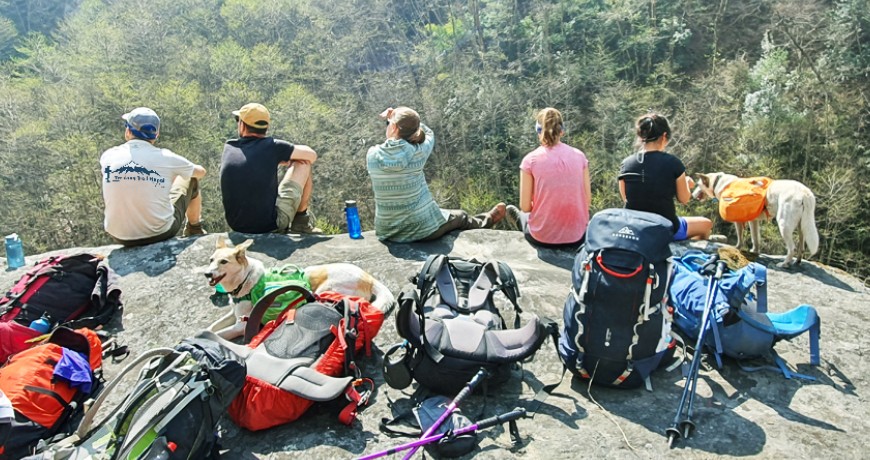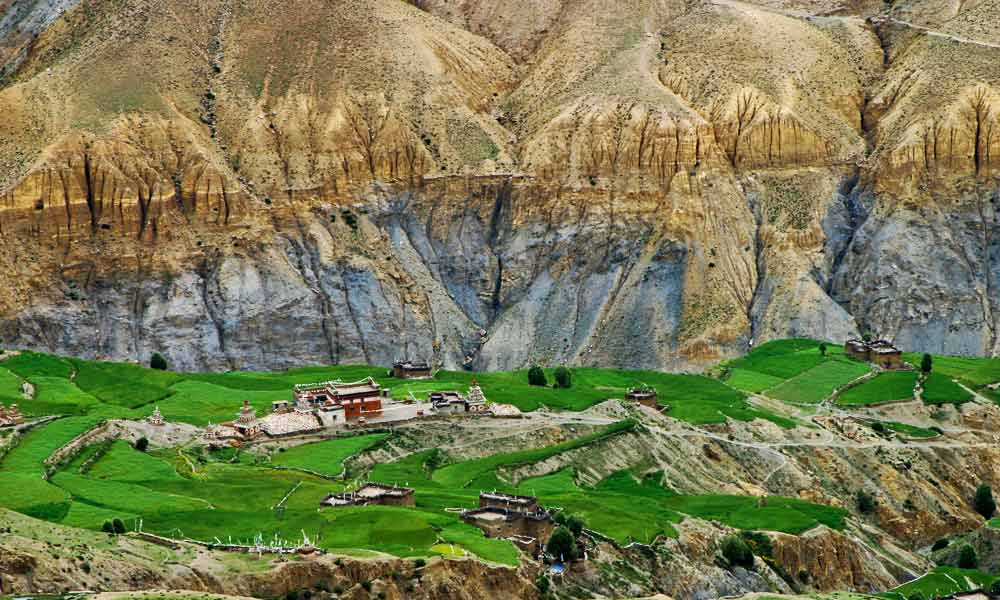8 Popular Trekking Areas in Nepal 2025
Known as one of the most favorite trekking countries globally, Nepal has a lot to offer mountain lovers and adventure seekers. There are 8 popular trekking areas in Nepal, which will surely attract you to visit this great country! One can enjoy the majestic Himalayas during a trek to one of the most famous base camps, such as Everest Base Camp or Annapurna Base Camp. Visit high-altitude turquoise-colored lakes, challenge incredible mountain passes and enjoy the fantastic sceneries. You can also see the culture and traditions of the local people living up high in secluded mountain villages. These eight trekking regions in Nepal offer it all! To do your search for the ideal trekking area in Nepal more accessible and we will describe a bit what to expect. Even what type of permits you need for those trekking areas.
The 8 Popular Trekking areas in Nepal are:
- The Everest Trekking area
- The Annapurna Conservation area
- The Mustang Trekking area
- The Manaslu Conservation area
- The Langtang National Park Trekking area
- The Dolpo Trekking area
- The Kathmandu Valley Trekking area
- The Pokhara Valley Trekking area
1. The Everest Trekking area, also known as the Sagarmatha National Park aka Khumbu Trekking
Probably one of the most famous trekking areas in Nepal is the Everest region. She was home to the highest mountain in the world, Mt Everest 8,848m, and to some of the best trekking trails in the world! Trekking in the Everest region is about Mt Everest and the local Sherpa culture, the incredible mountain and high peak views, and the adventurous trails going from forested to barren rock.
How to reach the Everest trekking area?
As a major tourist destination in Nepal, the Everest trekking region is accessible via air or land. Daily flights from Kathmandu go to Lukla, the gateway to the Everest region. It's also the most common way to reach the Everest trekking area. Another option is by land, drive to Salleri and continue up from there towards Lukla. Traveling by land to the Everest trekking area is time-consuming, and some extra trekking days are required to reach Lukla. The best option is to go by air and take a morning flight to Lukla airport. The flight itself is short, about 30 minutes, and the views are just amazing. Do note that this flight can easily be delayed or even canceled due to weather changes, so make sure that you have an extra day on your itinerary to be safe.
Popular Treks in the Everest region:
- Everest Base Camp Trek:
As one of the most popular treks in Nepal, the Everest Base Camp trek goes in a northwards route from Lukla, passing by Namche Bazaar, Dingboche, and ultimately Gorakshep before reaching EBC. A memorable morning hike up to Kala Pathar is a must to witness a breathtaking sunrise view during this trek! This trek can be done in 15 to 18 days, depending on your itinerary.
- Everest Gokyo Lake Trek:
The Everest Gokyo Lake trek goes in through the Everest region in a clockwise way from west to east. The trail splits off from the original Everest Base Camp trek after Namche Bazaar and heads towards the Holy Lakes of Gokyo. Gokyo Everest Trek is the best lake trekking amongst photographers as a one-day hike up to Gokyo Ri. One of the most incredible viewpoints of the Everest region. After crossing the Cho La Mountain Pass (5,420m), Everest Base Camp is possible during the Everest Gokyo Lake trek.
- Everest Three High Pass Trek:
As one of the most extended treks in the Everest region, the Everest Three High Pass trek is the ultimate adventure! Trekkers can choose either a clockwise or anti-clockwise route and cross the famous three high passes of the Everest region. From west to east, the Renjo La (5,360m), the Cho La (5,420m), and finally the Kong Ma La (5,540m). These three passes offer some extraordinary views and make for ideal photo opportunities! So head out on one of the best adventures in the Everest region and challenge the Himalayas with the Everest Three High Pass trek in Nepal.
- Everest View Trek:
Known as one of the favorite short treks in the Everest region, the Everest View Trek, as the name suggests, focuses on the views. Trekkers follow the same route as the EBC trek but stop at Tengboche Monastery before heading back down. The Everest View trek is ideal for those with lesser stamina or travel time but still want to see the majestic Himalayas and, of course, Mt Everest!
What is the difficulty of trekking in the Everest region?
As there are many different types of treks available, trekking in the Everest region differs. For the Everest Base Camp trek and the Everest View Trek, novice trekkers can partake on the condition of having done some type of stamina training beforehand. On the other hand, for the Everest Three High Pass Trek and the Everest Gokyo Lake Trek, a more moderate fitness level is the basis to enjoy these treks fully. There are no technical parts during the hike, but it can be quite hard for novice trekkers due to the high elevations and long trekking days.
What type of permits do you need for trekking in the Everest region?
There are two types of permits required for trekking in the Everest region. One is for entering the National Park about 30 USD, and the other is for documenting the Pasang Lahmu rural municipality for about 20 USD. In addition, for trekkers that wish to start from Jiri instead of flying direct to Lukla, a TIMS- Card is needed, but issued by local government body called Pasang Lamhu Rural Municipality Entry Permits with a vision to develop further and maintain the trekking trails, ensuring future generations of trekkers also enjoy this incredible Himalayan region in Nepal.
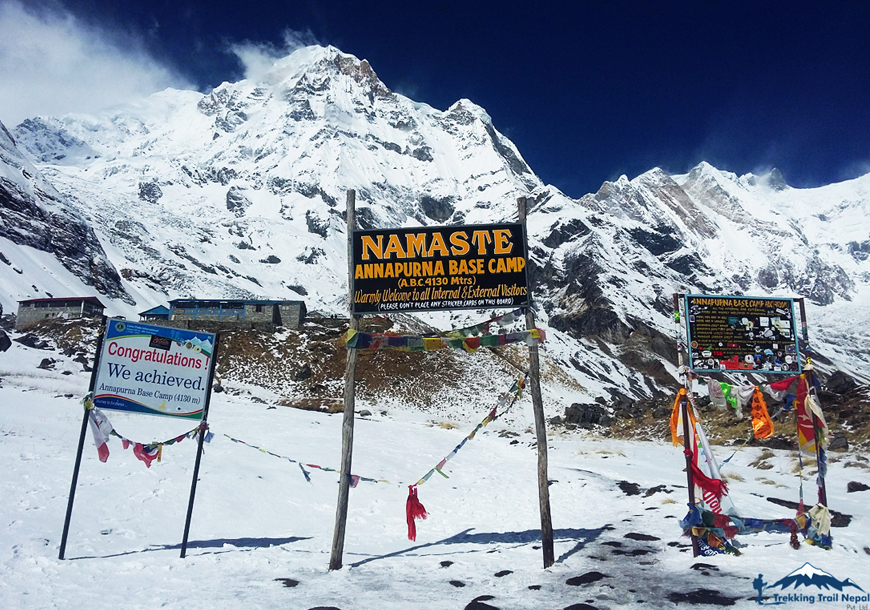
2. The Annapurna conservation area
Most often described as Nepal's most beautiful trekking region, the Annapurna Conservation Area is a popular destination for trekkers worldwide. This excellent trekking region has many different treks available, and the landscapes vary from lush jungles to barren deserts filled with rock and peaks. Trekking in the Annapurna Conservation Area is a must-visit region if you want to capture the natural beauty of the Himalayas.
How to reach the Annapurna Conservation area?
The Annapurna Conservation can reach in a couple of ways. Those interested in trekking south of the Annapurna Himalayas usually start from Pokhara, which can be reached from Kathmandu by land or air. A short drive to New Bridge, also known as Nayapul, marks the Annapurna Conservation area's start. Those ready to challenge a round tour of the north side of the Annapurna Himalayas can drive from Kathmandu to Beshisahar and take a jeep to Chame. Another way is to start trekking in the Manaslu region and head west, crossing the Larke La Mountain Pass.
Popular treks of the Annapurna Conservation Area:
- Annapurna Base Camp trek:
As one of the most popular treks in the Annapurna Conservation Area, the Annapurna Base Camp trek in Nepal is booked every year by trekkers and mountain lovers. The route is quite easy-going and can combine with other walks. This trek goes, for the most part, through lush jungles and up ridges giving spectacular views. Passed Deurali, the trail becomes more barren and rocky, marking the entry into the Annapurna Sanctuary. An interesting fact is that Annapurna Base Camp is also accessible via helicopter from Pokhara.
- Ghorepani Poon Hill trek:
The Ghorepani Poon Hill trek in the Annapurna Conservation area is well known to photographers, as this short trek highlights some of the best viewpoints in the entire region. The only challenging part during this trek will be climbing the stone steps from Ulleri to Ghorepani. For the rest, it's pretty easy-going and rewarding. The main highlight of this short trek in Nepal is Poon Hill (3,210m), also known as the photographer's paradise. This incredible viewpoint has some of the best views of Mt Dhaulagiri I (8,167m), Annapurna South (7,219m), and the iconic fishtail-shaped mountain Mt Machhapuchhare (6,993m). Of course, many other mountains and peaks are visible from the Ghorepani Poon Hill trek.
- Mardi Himal trek:
Although the Mardi Himal trek goes up to Mardi Base Camp, this trek highlights more Mt Machhapuchhare than Mardi itself. Trekkers head out in the Annapurna Conservation area and hike past Forest Camp, Low Camp, and High Camp to reach Mardi Himal Base Camp. The hike itself is not strenuous and is primarily a favorite during the cold season when there is a chance of snowfall. Mardi Himal trek can design long walks by combining the Ghorepani Poon Hill trek. Or even further, the Annapurna Base Camp trek, making this trek ideal for all adventure seekers!
- Annapurna Circuit trek:
The Annapurna Circuit Trek heads in a bend north of the Annapurna Himalayas from east to west. This trek in the Annapurna Conservation Area is different from the others, as the landscape here is more barren and higher. Stunning valleys, high peaks, and at least 140 distant mountains are visible during this trek in the Annapurna Himalayas. The trail heads from Beshisahar, Chame towards Manang. From here, the walk heads further west to the mighty Thorong La Mountain Pass (5,416m) and, descending from here, takes you to the barren lands of Muktinath. Trekking the Annapurna Circuit can be challenging but equally rewarding and combined with the Manaslu Circuit trek!
- Tilichio Lake trek:
Tilicho Lake trek is Becoming more popular every year, an extension of the Annapurna Circuit trek. The trail is the same up to Manang, and instead of heading directly to the Thorong La Pass via Yak Kharka, the trail leads further west to the world's highest lake, Lake Tilichio (4,949m). This high-altitude turquoise-colored mountain lake bound by snowcapped mountains makes for a perfect highlight during your trek in Nepal.
- Nar Phu Valley Trek:
Probably one of the most memorable and newest treks in the Annapurna Conservation Area, the Nar Phu Valley trek follows a similar route as the Annapurna Circuit trek. But before heading to Manang, the trail forks north up the river running to the newly discovered villages of Nar and Phu. Tibetan-influenced people inhabit this great area, and the trails have a couple of Gompas and monasteries to visit. Visited by fewer people, most of this area remains untouched. This NarPhu Valley gives a more secluded feeling while doing the Nar Phu Valley trek in Nepal.
The treks mentioned above might be the most popular in Nepal but are certainly not available in the Annapurna Conservation area. There are many more new and unfamiliar treks available. Here is a short list of some;
- Honey hunting trail
- Poon Hill Jomsom
- Machhapuchhare model trek
- Royal trek
- Daphne trek
- Tamu heritage trek
What is the difficulty of trekking in the Annapurna Conservation area?
Similar to the Everest trekking region, the difficulty of trekking in the Annapurna Conservation area differs on which trek you choose to do. Short treks like the Ghorepani Poon Hill Trek and the Mardi Himal trek are best for novice trekkers without prior trekking experience. But when you want to try the Annapurna Circuit trek or the Nar Phu Valley trek, at least a moderate level of trekking is required. The difficulty is due to the longer trekking days and the higher elevations. Therefore, it is essential to prepare yourself to do some stamina training before joining the trek.
What types of permits do you need for trekking in the Annapurna Conservation area?
Only two types of permits are enough for trekking in the Annapurna Conservation area. The first one is the Annapurna Conservation area Permit known as ACAP. In short, this one costs about 30 USD. The other one is a TIMS card that cost about 20 USD. All trekking agencies in Nepal include permit fees in their packages with a licensed trekking guide. It's always a better option to book via a trekking agency, so you don't need to deal with all the paperwork and fees but can enjoy a fantastic trek in the Annapurna Conservation area!
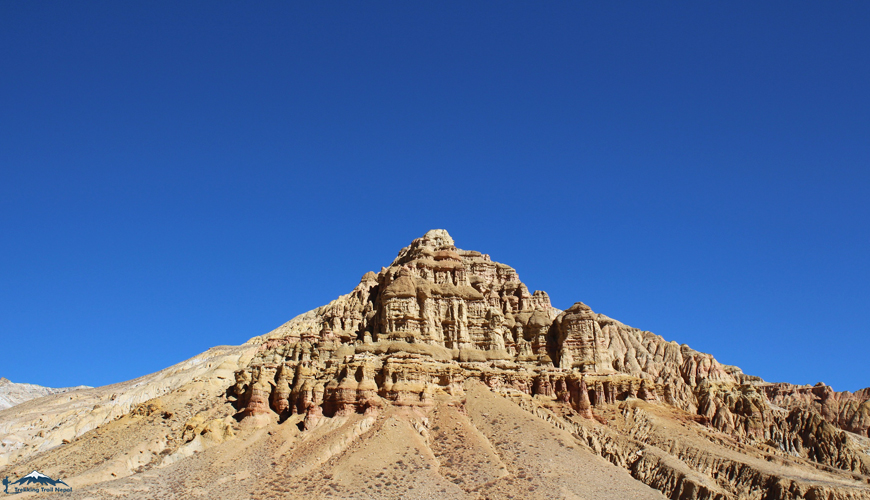
3. The Mustang Valley
CNN Travel includes the Upper Mustang Valley in the list of Where to Travel in 2025: The Best Destination to Visit on
Bordering the Annapurna region and crossing the Kali Gandaki River from Kagbeni takes you to the secluded Mustang trekking area. This fantastic trekking region in Nepal borders Tibet, and when you visit Mustang, you can see the Tibetan influence. There are only two trekking routes in the Mustang trekking area, the Upper and Lower Mustang. Famous for jeep tours, mountain biking, and motorbiking tours, the Upper Mustang region resembles a Wild West of America. Barren plains with high altitude mountains in the distance, villages on green pastures near rivers, and incredible hilltop monasteries. The most famous place of the area is Lo Manthang, an old stone-walled city housing a palace where the ancient king of Lo still resides.
How to reach the Mustang trekking area?
Jomsom is the gateway of the Mustang. This riverside city has an airport and is also accessible by land. From Jomsom, you can follow the Kali Gandaki River north towards the apple orchards of Kagbeni. At this village, a bridge crossing the river takes you straight into the Mustang trekking area. Many like to motorbike from Pokhara to Jomsom and head further into Mustang, while others prefer a flight from Kathmandu to Pokhara and then transfer to Jomsom. The Mustang trekking area is reachable through these options, and waiting eagerly for your arrival!
Popular treks of the Mustang trekking area:
- Upper Mustang trek:
The Upper Mustang trek, being opened in 1992, has attracted many visitors over the years and is considered one of the best two-week treks in Nepal. The trail passes small settlements until reaching the city of Lo Manthang. You can explore more, because of many old monasteries and even villages with caves Along the way. Here you get to see a unique culture and how they survived in a harsh environment. Being more popular than the Lower Mustang trek, the Upper Mustang is also best for trekking and jeep or even motorbike!
- Lower Mustang trek:
The Lower Mustang trek is more like a one-way hike and returns a jeep, popular among domestic travelers. Trekkers can make a home base in either Maprha, Jomsom, or Kagbeni, and every day makes an excursion to a different part of the Lower Mustang region. Exciting places to visit during the Lower Mustang trek are the Temple at Muktinath. The village of Lubra, where an old Bon Buddhist culture is still on, and then hike up the Kali Gandaki Gorge.
What is the difficulty of trekking in the Mustang region?
Trekking in the Mustang region of Nepal is not considered challenging or complex. Even novice or beginner trekkers can fully enjoy this fantastic trekking region west of the Annapurna Range. Both the Lower and the Upper Mustang treks are easy-going, with secure trails and lower altitudes. The mountain views might be lesser than the Annapurna Conservation Area, but the views are equally spectacular!
What types of permits do you need for trekking in the Mustang region?
As the Mustang region borders the Annapurna Conservation area, and this is the only way in, the permits needed for this one are Annapurna and the Mustang region. The ACAP permit for the Annapurna region costs about 30USD, and for the Mustang region, a special restricted area permit is MANDATORY that costs about 500USD. While the cost might be high, it's worth it, as trekking in the Mustang area is both rewarding and unique!
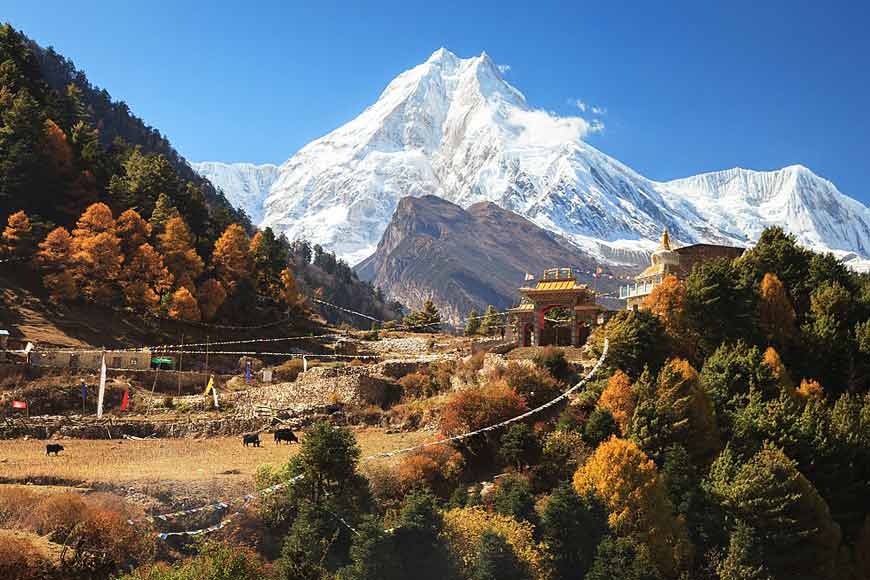
4. The Manaslu conservation area
Home to the eighth highest mountain in the world Mt Manaslu (8,156m), the Manalsu Conservation area is one of Nepal's more secluded trekking regions. The Manaslu Circuit Trek, the Manaslu Base Camp trek, and the Tsum Valley trek are three popular treks. Bordered by Tibet, the people inhabiting the Manaslu Conservation area have a strong Tibetan influence in their culture. The trekking area is both beautiful and untouched by modernization. Trekkers here can enjoy the great outdoors of the Nepalese Himalayas. At the same time, the Manaslu Circuit trek heads to the Annapurna Conservation Area, the Tsum Valley trek focuses only on the Manaslu Conservation area and its cultural aspect. Trekking in the Manaslu Conservation area has, for many, been spiritual and satisfying!
How to reach the Manaslu Conservation area?
The Manaslu Conservation area is only reachable via land, and a bus drive from Kathmandu takes you straight to the Arughat bazaar. From here, another drive takes you up to Soti Khola, the official entry point of the Manalsu Conservation area. So while many trekkers likely head west into the Annapurna Conservation area and from there heads back to Kathmandu, those wanting to stay only in the Manaslu region have Soti Kola and Arughat bazaar as only entry and exit points.
Popular treks of the Manaslu Conservation area:
- Manaslu Circuit trek:
Due to its remoteness, not many trekkers go to the Manaslu Circuit, resulting in more freedom during the trek. Circulating the Manaslu area, this trek goes from south to north and ultimately west into the Annapurna Conservation area. Due to its fewer visitors, the trails are more adventurous and off the beaten path. The main highlight is crossing the Larke La Mountain Pass (5,160m). Amazing views of the Himalayas, and on a clear day, you will see some peaks from Tibet as well! Check out our Best Selling 12 Days Short Manaslu Circuit Trek.
- Manaslu Base Camp trek:
This incredible trek in Nepal heads to Manaslu Base Camp (4,800m), located just at the lap of the world's eighth highest mountain. While the trail follows that of the Manaslu Circuit, it changes before heading to Samdo village. After reaching Samogaon and the acclimatization day here, an excursion takes you up to Manaslu Base Camp. After this, the trail continues as the Manaslu Circuit trek and crosses the Larke La Pass.
- Tsum Valley trek:
The Tsum Valley trek in the Manaslu Conservation area has less altitude than the Manaslu Circuit but more culture. During this trek one, enters the incredible Tsum Valley, visiting famous Gompas like; Mu Gompa and Dhephyudonma Gompa. Another highlight of the Tsum Valley trek is visiting Ganesh Himal Base Camp at 4,200m high! Culture, mountains, and nature at their best are what I found during the Tsum Valley trek in Nepal.
How difficult is trekking in the Manaslu Conservation area?
Most trails are off the beaten path, and the track feels difficult in the Manaslu Conservation area. Moderate fitness is vital with an open mind for rural guesthouses and rugged terrain. As the treks in the Manaslu Conservation Area go from forest trails to higher and rocky paths, some pre-exercise form is a must to enjoy this trekking region better. Trekking in the Manaslu Conservation area is not complex but more challenging.
What types of permits do you need for trekking in the Manaslu Conservation area?
The permits required for this region differ from which trek you would like to do. The Manaslu Conservation area itself requires three keys. Manaslu Conservation area pass or MCAP cost about 30 USD. Manaslu Restricted area permit (M-RAT) costs about 100USD for the 1st week. And 15USD per additional day during the autumn season and 75USD for the 1st week. 10USD per day during the rest of the year. But as the Manaslu Circuit Trek and the Manaslu base Camp trek end up in the Annapurna Conservation area, an ACAP permit is also necessary for these two treks costing about 30USD.
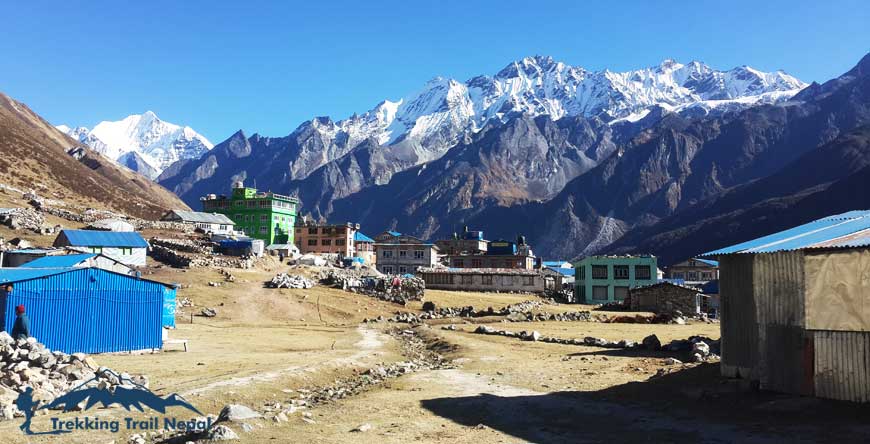
5. The Langtang National Park trekking area
Noted as the first National Park in Nepal, the Langtang National Park trekking area has some interesting points to visit! Touching the border of Tibet and just north of Kathmandu, the Langtang trekking area is well-known to short trekkers. The entire region is fantastic, with views of the Ganesh Himal and Mt Manaslu. The Lauribinayak Mountain Pass (4,610m) and opinions of the Lantang Lirung (7,246m) are just some of the highlights in the Langtang region. In addition, every year, trekkers and pilgrims head to Kyanjin Gompa, a Buddhist monastery turned village. Access to Lake Gosaikunda and the two viewpoints Kyanjin Ri (4,799m) and Tsergo Ri (4,983m), is possible.
How to reach the Langtang National Park trekking area?
The Langtang National Park trekking area is made very accessible with a drive from Kathmandu to Syabru Besi. Syabrubesi is the gateway to the entire Langtang Valley! The drive itself is pretty scenic, and quickly the busy city of Kathmandu disappears, and the calmer farmlands and hills of Nepal appear. There are local buses headed that way daily, but to get the best experience, I prefer to hire a jeep or other private vehicle. It's a ride of about 6 to 7 hours, so more comfort is always welcome!
Popular treks of the Langtang National Park trekking area:
- Langtang Valley trek:
Langtang Valley is an impressive 11 days trek in the Langtang Valley. Highlights of this trek are:
- The Kyanjin Gompa.
- Kyanjin Ri.
- Tsergo Ri.
- The yak cheese factory.
- The culture of the local Tamang people.
The Langtang Valley trek is not arduous but challenging as the trail has many ups and downs. It is spectacular to see how the village stands again after the 2015 earthquake to accommodate travelers and trekkers further!
- Tamang Heritage trek:
While also taking place inside the Langtang National Park, the Tamang Heritage trek takes a more cultural route. Highlighting the lifestyle and culture of the Tamang people who mainly inhabit the Langtang Valley, this trek has a lot to offer and is rapidly becoming more popular amongst trekkers. One of the best viewpoints during this trek is the Nagthali Ghyang (3,165m). This trek also has homestay accommodation with a traditional Tamang family to understand these fantastic people's daily lives better!
- Kyangja La Pass trek:
Also known as the Ganja La Pass Trek, the Kyangja La Pass trek is one of the most incredible and rewarding treks of the Langtang Valley. The trekking trail crosses the Langtang Valley and ends with the Helambu trek, but the real adventure starts after reaching Kyanjin Gompa. After taking a rest at this famous monastery, you head out to challenge the Kyangja La Mountain Pass (5,122m). Depending on the season, it might not be possible to cross this mountain pass, as snowfall and ice can make it unpassable. In any case, while crossing this pass, some technical skills are required, and with the help of your experienced guide, you can cross it! One of the most remarkable things to see is that after crossing and passing ice and glaciers, the trail opens up into a lush green area filled with wildlife and Himalayan flora.
- Gosaikunda Sundarijal trek:
This incredible nature trek in the Langtang Valley has long been popular amongst foreigners and locals. The main highlight of this trek is the Holy Lake of Gosaikunda (4,165m) and the crossing of the famous Lauribinyak Pass (4,610m). The views during the Gosaikunda Sundarijal trek are equally incredible. Many wildlife and birds will be your friends during this easy and short trek in the Langtang Valley.
- Helambu Circuit trek:
The Helambu Circuit trek is more of a village trek going around the Lantang National Park southwestern part. Here the Yolmo people reside and are well known for their warm hospitality. Interesting villages to see are Kutumsang, Melamchi Gaon and Shermaphang. The Helambu Circuit trekking trail follows some up and down with few steep climbs, heads over and along rivers and into valleys. In Short, the Helambu Circuit trek is not challenging, but a primary fitness level is a must.
- Short Helambu trek:
Probably one of the best short treks in Nepal near the Kathmandu Valley, the Short Helambu trek takes a shortcut in the traditional Helambu Circuit trek. This four days short trek has two major viewpoints at Chisopani and Tharepati. A great way to enjoy nature and have a short hike through the Langtang Valley. There are, of course, more treks and hikes available in the Langtang National Park, which also allow for solo or in group. Here are some other outings public:
- Langtang Gosaikunda Melemchi trek
- Langtang Valley trek
How difficult is trekking in the Langtang National Park?
Trekking in the Langtang National Park is not considered complex but relatively straightforward. All treks here can be done by novice trekkers, except the Kyanja La Pass trek, as crossing this mountain pass can get technical. Naturally, for every hike in the Himalayas, some form of stamina and fitness is required to enjoy them fully. Making use of porters and guides will only make it easier to focus on the views and trails.
What types of permits do you need for trekking in the Langtang National Park?
You need two permits for trekking in the Langtang National Park and one entrance fee at Shivapuri National Park. The first permit is the Langtang National Park Permit which costs about 30 USD; the other is a T.I.M.S-card which costs about 20 USD. Since the treks in the Langtang Valley start from Syabru Besi, located in the Shivapuri National Park, an entrance fee of about 5 USD is required.
6. The Dolpo trekking area
The Dolpo trekking area is one of the unique trekking regions in Nepal. This entire area resembles that of a Tibetan landscape, with desert and barren valleys. Trekking in Dolpo is more of a spiritual trek with its leading destinations Phoksundu Lake and Shey Gompa. Amazing views of Crystal Mountain with the views of lakes and the scenery that turns greener are the significant highlights of Dolpo Trekking. Dolpo used to be a famous salt trade route from and to Tibet, resulting in cultural influence. Mostly Dolpo trekking areas are home to the Tibetan Buddhist religion, gompas, and ancient monasteries, and its are many a trek in the Dolpo region. The villages here are old and underdeveloped, giving you a better experience of how these people survive in a harsh environment.
How to reach the Dolpo trekking area?
There are three options available to reach the Dolpo trekking area. The first, which is the most time-saving and comfortable, is by flight. There are a couple of flight options available. A short hour of flying takes you from Kathmandu to Nepalgunj. The following day another flight of about 40 minutes takes you to Juphal, where trekking into the Dolpo region starts. Another flight from Nepalgunj is also possible to Jumla. Those who are interested in going from Rara Lake can take a morning flight from Nepalgunj to Talca. The second option is by land transport. Dolpo can reach via a privately hired vehicle or by taking a local bus. Taking land transportation takes longer, about 14 hours by bus and 8 to 9 hours by private car. The route goes from Kathmandu to Jumla via Surkhet. The third option is more common amongst trekkers and is a mix of fly and drive to reach the Dolpo trekking area. Take a flight from Kathmandu to Pokhara, from here move to Beni and take another vehicle up to Takam.
Popular treks of the Dolpo trekking area:
- Upper Dolpo trek:
This unique trek in Nepal is a mix of guesthouses and camping trekking. Following tricky and narrow trails along rivers and heading deep into the barley and wheat fields of the region, the Upper Dolpo trek can be quite adventurous! The main highlight of this trek is Phoksundu Lake, the deepest lake in Nepal! A visit to the Shey Gompa and views of the Crystal Mountain is also part of this fantastic 25 days trek in Nepal.
- Lower Dolpo trek:
Although being less popular than the Upper Dolpo trek, the Lower Dolpo trek has some exciting highlights. Trekkers cross two high mountain passes, the Numa La Pass (5,310m) and the Baga La Pass (5,170m). Visiting iconic and traditional villages such as Dho Tharap and Toltol is also part of this adventurous Lower Dolpo trek. To end the tour exploring Shey Phoksundu Lake is just perfect for the ultimate Dolpo experience.
How difficult is trekking in the Dolpo trekking area?
Trekking in the Dolpo region of Nepal is not necessarily tricky but can get strenuous due to the challenging trails. Those who get tired by the end of the trek can hire a pony to make the last part of the trek a bit easier going. Overall no technical experience is required for either the Upper or Lower Dolpo trek. Just make sure to build up your stamina and fitness before undergoing a tour in the Dolpo trekking area.
What types of permits do you need for trekking in the Dolpo trekking area?
There are three permits available for the Dolpo trekking area. First, a Shey Phoksundu National Park Permit is required; this costs about 30USD. Then for the Lower Dolpo trek, you would also need a special restricted area permit called the Lower Dolpo Restricted Area Permit, costing about 20USD for a week plus 5USD per additional day. Finally, the Upper Dolpo trek then needs the Lower Dolpo Restricted Area Permit, and the Upper Dolpo Restricted Area permit costs about 500USD.
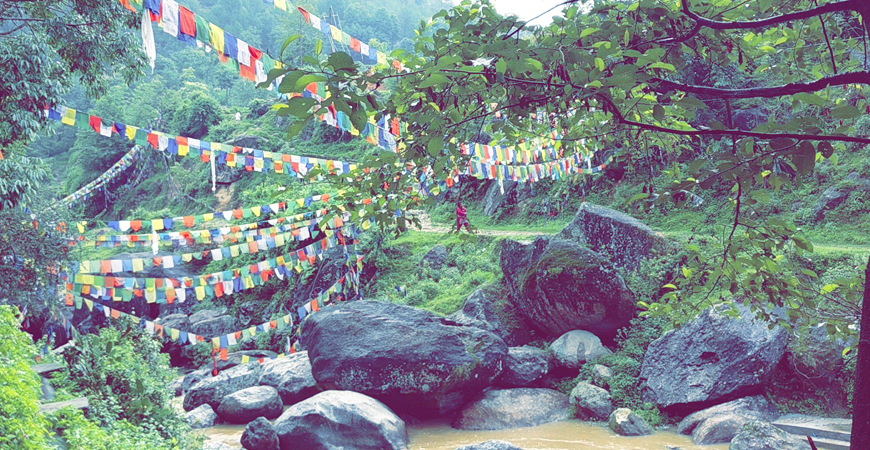
7. The Kathmandu Valley trekking
More considered hiking, the Kathmandu Valley trekking area is the best choice for easy short treks without permits in Nepal. Surrounded by green hills, the Kathmandu Valley has exciting places to hike to in each direction. There is Shivapuri National Park; the origin of the Bagmati River comes from this incredible wildlife and nature preservation park. There is a hill village called Nagarkot to the east, where on clear days, the entire northern Himalayas welcome you to the window. Ancient monasteries spread out over the hilltops of the whole Valley can be a hike. Old Newari villages also await your visit and provide homestay facilities, so you get to see the traditions and lifestyles of these valley people.
How to reach the Kathmandu Valley trekking area?
Well, this should be a no-brainer, as all roads in Nepal start and end in Kathmandu! As the international airport is located in the city, reaching Kathmandu is just a matter of booking a flight. Either can get almost all hiking and short trekking routes in Kathmandu; local busses or micro vans, taxis, or private hired vehicles.
Popular treks of the Kathmandu Valley trekking area:
- Chandragiri Hill trek:
Chandragiri is next to the exit of the Kathmandu valley. This incredible temple is made on top of a hill and also houses an astronomy tower. The trek starts from Machegaun and takes you through farmlands, the jungle, and finally to the top of the mountain. Are you feeling tired after a steep climb up? Chandragiri has also got a cable car bringing visitors up and down every day. Overnight during this short trek can be done in Machegaon on a homestay basis or back in the central city at your hotel.
- Namo Buddha Panauti trek:
The Namo Buddha Panauti trek is more cultural and religious than the others, as with this short trek in Kathmandu, some interesting. From Dhulikhel to Namo Buddha, it's just a couple of hours of trekking through beautiful jungle terrain. Namo Buddha is a famous Buddhist Monastery where every year devoted pilgrims come to give prayers. Dhulikhel or Namo Buddha will be your overnight camp for two days of Namobuddha Hiking in Kathmandu. The next day we trek down the hills and back into the farmlands. There we visit the old medieval-style Newari village of Panauti. Just entering this unique village takes you back in time, and the locals are ready to receive you and show you their ancient ways of crafting.
- Chisopani Nagarkot trek:
This fantastic three-day trek in Kathmandu takes you from the farmlands of Sundarijal to the jungles of the Shivapuri National Park and into the village of Chisopani. Meaning Coldwater, this village lies on the jungle's edge up high. After a good night's sleep, the trek continues through the beautiful forested trails up to hill station village Nagarkot. Fantastic sunset and sunrise views await you here, and depending on the season you go during the morning, the views from the outlook tower are breathtaking! On the way back to Kathmandu, you can visit the Changu Narayan temple. Even continue this trek to Bhaktapur and explore the Royal Durbar Square.
- Kathmandu Valley trek:
This day today around the valley trek in Kathmandu takes you to all the corners of the Valley. Making headquarters in Thamel, the city's heart, you can explore every part of Kathmandu day today. Trek through Shivapuri one day and the next to Dakshin Kali Temple. Trek to lesser touristic places such Chitlang and Markhu Lake, or trek through the farmlands up the hill towards Dhading. The possibilities are endless!
Of course, there are a lot more hikes and treks to be done in the Kathmandu Valley. However, some of the one-day others can be made longer with homestay experiences.
How difficult is trekking in the Kathmandu Valley trekking area?
As there are no real mountains within the Kathmandu Valley trekking area, the difficulty comes with the duration of the hike. Long and steep walks are more taught than others. However, some other short hiking through jungles, farmland, and up and over hills are more adventurous and enjoyable for all. Some stamina would be ideal for enjoying these short treks or hikes thoroughly but is not required. Families with children to seniors enjoy trekking or hiking in the Kathmandu Valley trekking area, setting the difficulty easy for novice trekkers!
What types of permits do you need for trekking in the Kathmandu Valley trekking area?
There are no permits necessary for trekking within the Kathmandu Valley. There are some restricted areas where an entrance fee is required, but these usually don't come up to 10 USD—a small price for entering one of the most beautiful areas of the Kathmandu Valley. For most treks or hikes in Kathmandu, a guide or porter is not compulsory. But a guide to show you the way is always the best idea which takes you closer to your interest.
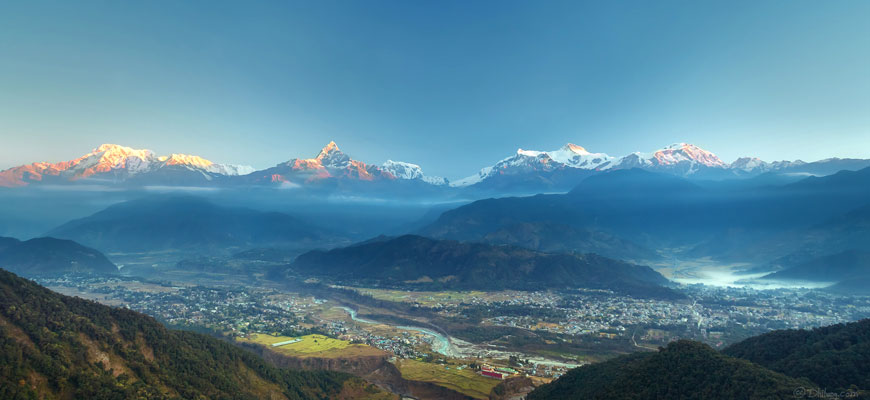
8. Pokhara Valley Trekking
Considered the most scenic place of Nepal, the Pokhara Valley trekking area is ideal for some short treks with incredible views. As the gateway to the South Annapurna Mountains and Annapurna Base Camp, the Pokhara Valley between green hills touches Phewa's pristine lake. The entire area is overlooked from the Fishtail Mountain Mt Machhapuchhare and has some fantastic trails for you to enjoy. Nearby the city across Phewa Lake on the hill is the World Peace Shanti Stupa, and from there, trekkers can head to Panchase village and peak. On route to Nayapul short trekkers can fork off and trek up to Dhampus hill village and further to the Australian camp. Close to the city lies the hill of Sarangkot; even some hiking and paragliding with views of the Valley and mountains are best from Pokhara Valley Trekking.
How to reach the Pokhara Valley trekking area?
Pokhara has been made easily accessible as a significant start and endpoint for many trekkers and tourists. A short flight from Kathmandu or direct highway road access to the beautiful city of Pokhara. Every day local and tourist buses depart from Kathmandu to Pokhara and back. Motorbike hire in Kathmandu and driving to Pokhara is also possible while more adventurous people even raft over the Trishuli River towards Pokhara. Soon to open is also an international airport making Pokhara one of Nepal's most accessible reachable cities!
Popular treks of the Pokhara Valley are:
- Mardi Himal trek:
Known to be one of the most beautiful and scenic short treks in Pokhara, the Mardi Himal trek can finish in just a couple of days. This short trek in Nepal always takes you closer and closer to Mt Machhapuchhare (6,993m) and has a fantastic viewpoint just a bit further up from High Camp. During the winter season, snowfall is quite common, transforming the entire landscape!
- Short Poon Hill trek:
The Photographers trek is a better name for the Ghorepani Poon Hill trek. Famous for its incredible views, Poon Hill (3,210m) is one of the top spots to catch a breathtaking sunrise view over the Annapurna Range. You start to trek from Nayapul or New Bridge and head your way up from Ulleri to Ghorepani. Poon Hill is just a short hike up from here. Guesthouses in Tikhedunga, Ulleri, and Ghorepani are ready to receive you for overnight stays.
- Royal trek:
The Royal trek takes place north of Pokhara and goes through the lap of the southern Annapurna Himalayas. As a short trek in Pokhara, some attractive villages and lakes fall during this Royal trek. You can see the authenticity of the unique Gurung culture during this trek, as well as incredible views of Mt Dhaulagiri (8,167m), Annapurna I (8,091m), and many other Himalayan giants! An interesting fact is that this trek got its name from Prince Charles, who explored this area.
- Gandrung village trek:
As the name tells it, the Gandruk Village trek takes you up to the Gurung village, Gandruk. This beautiful Gandruk village is on the route of the Annapurna Base Camp. So even If you are coming down from Ghorepani, you can visit this typical village like other trekkers. The town is one of the biggest in the region and home to Gurung people. Here you can see the ancient and unique Gurung museum. And the locals are more than happy to show you their culture and traditions!
- Panchase trek:
Just next to the Pokhara Valley lies Panchase Peak (2,513m). Purchase an excellent hill point and viewpoint, which is best for short hiking around Pokhara. Less touristic and more authentic, the Panchase homestay trek is perfect if you are looking for a different experience. The villages of Arthur and Bhanjyang have homestay facilities available, increasing the cultural aspect of the hike. You can even start this trek by crossing Phewa Lake and visiting the World Peace Shanti Stupa.
- Dhampus Sarangkot Australian Camp trek aka Pokhara Hill Trail Trek:
A relatively easy trek near Pokhara, the Dhampus Australian Camp trek goes from Phedi in a zigzag way up to Dhampus. The entire town shifted from the other side of the hill to the main trail to the Australian camp to get better commercial access. Stunning views, a traditional village, and a historical Australian camp are the highlights of this hike. Dhampus Sarangkot Trek is another name for Dhampus Australian Camp Trek. The way down may be different as you can choose between either going back to Phedi or Kande.
How difficult is trekking in the Pokhara Valley trekking area?
As short treks, it's not exactly difficult to walk in the Pokhara Valley trekking area. There are no technical parts during these treks and can be enjoyed by young or old. During the wet season, the trails can become slippery, but for the rest is trekking in the Pokhara Valley easy and ideal for novice trekkers!
What types of permits do you need for trekking in the Pokhara Valley trekking area?
Depending on where you want to trek, you might need a permit for trekking in the Pokhara Valley trekking area. For example, treks that lead into the Annapurna Conservation Area need an ACAP permit costing about 30USD. For short hikes and tours around Pokhara, you don't need a trekking permit, but hiring a guide is always the best idea to explore more in the region.
8 Popular Trekking Areas in Nepal at Last:
As you can see, there are more than enough trekking options available, and with these eight popular trekking areas in Nepal, you can choose the best one for you! From short treks to long treks, visit cultural buildings or trek to high base camps, the choice is yours. Known as a top destination for trekkers worldwide, Nepal is never enough for just one trek. Over the years, many happy trekkers and hikers return for another adventure, and with 8 popular trekking areas in Nepal, there is always something new to see or discover!
Enquire Us
Recent Post
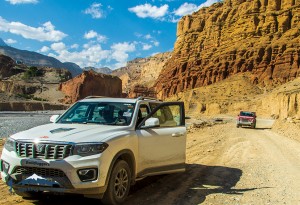
Nepal Introduces New $50 Daily Permit for Upper Mustang
Tips and Update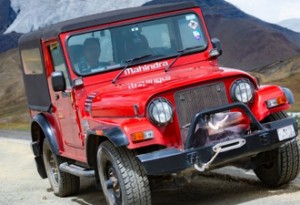
India Tibet by Nepal Road: 15-Day Overland Trip with Wildloggers 12 Jeep Convoy
Uncategorized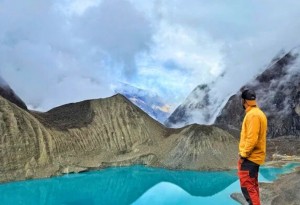
North Annapurna Base Camp Trekking A Comprehensive Guide
Trekking In Nepal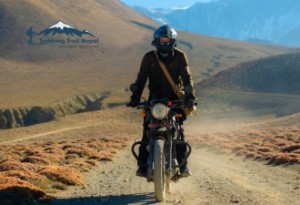
Is Self Driving is Possible in Upper Mustang Nepal?
Upper Mustang Trekking
Related Blog(s)
- North Annapurna Base Camp Trekking A Comprehensive Guide
- Every Thing You Need to Know about Annapurna Base Camp Trekking
- 2-Day Treks Around Kathmandu: The Perfect Short Escape for Nature and Culture Lovers
- 10 Best Trail Route Itinerary for Mohare Danda Trekking
- Is Annapurna harder than Kilimanjaro?
- Best 15 Hiking Trips in Kathmandu
- Mohare Danda Trek vs Mardi Himal Trekking
- 50 Tips For Everest Trek: It Is Not Difficult as You Think
- How Difficult is Everest Base Camp Trekking
- Fitness Guide for Everest Base Camp Trek: Tips to Stay Fit, Healthy on EBC Trek
- Everest High Pass Trek Vs. Annapurna Circuit Trek - 10 Differences
- How Many Trekking Routes are in Nepal
- Manaslu Trekking Question Answers 2025 Cost Best Months Tips
- Karbakeli Eco Trek - New Trekking Trail in Annapurna
- How long is ABC Trek? Shortest Route, Driving, Trekking Distance 2025
- Mount Everest Trek
- 10 Best Everest Base Camp Trek Itinerary - 2025
- Everest Base Camp Trek After COVID-19 - 2025
- Corona Virus Change Nepal Trekking
- Now You Can Skip Lukla Airport for Everest Base Camp TreK
- Adventure Trekking in Nepal - Top 5 Difficult Trekking Trails in Nepal
- Mohare Trekking Highlights | Eco Community | Short Hike | Itinerary
- 5 Best Himalayan Trekking Trails in Nepal
- Pikey Peak Trek - The Best Trekking in Lower Everest
- Mountain from Annapurna Circuit Trek in Nepal
- Know Before Annapurna Base Camp Trek
- Things to Know About Annapurna Circuit Trek
- Everest Base Camp Trekking Question
- Best 5 Days Short Trekking in Nepal
- Ama Dablma Base Camp Trek is a New Everest Trekking
- Why Everest Base Camp Trek the best Trek in Nepal?
- 6 Best Luxury Lodge Treks in Nepal
- Know Before Trekking in the Himalayas | Trekking in Nepal
- This is why Short Treks in Nepal are Amazing Adventures
- 5 Beautiful Base Camp Treks in Nepal
- 5 Things to avoid on Everest Base Camp Trek
- Best Nepal Trekking in December
- Tips About Trek In Nepal | Best Time Popular Trek Fitness Packing Altitude Sickness
- Why to choose Everest Base Camp Yoga Trek
- 5 Best Short Treks in Nepal
- Nepal Trekking Entry Fees and Permit Fees
- Best Monsoon Trekking in Nepal
- Mohare Hill is Second Poon Hill
- 5 Best Lake Trekking in Nepal
- Best Trekking Trails of Everest Region
- Group Joining Nepal Trekking for 2025
- The Best Short Treks from Pokhara
- Mohare Danda Trek: Best Short Trek from Pokhara
